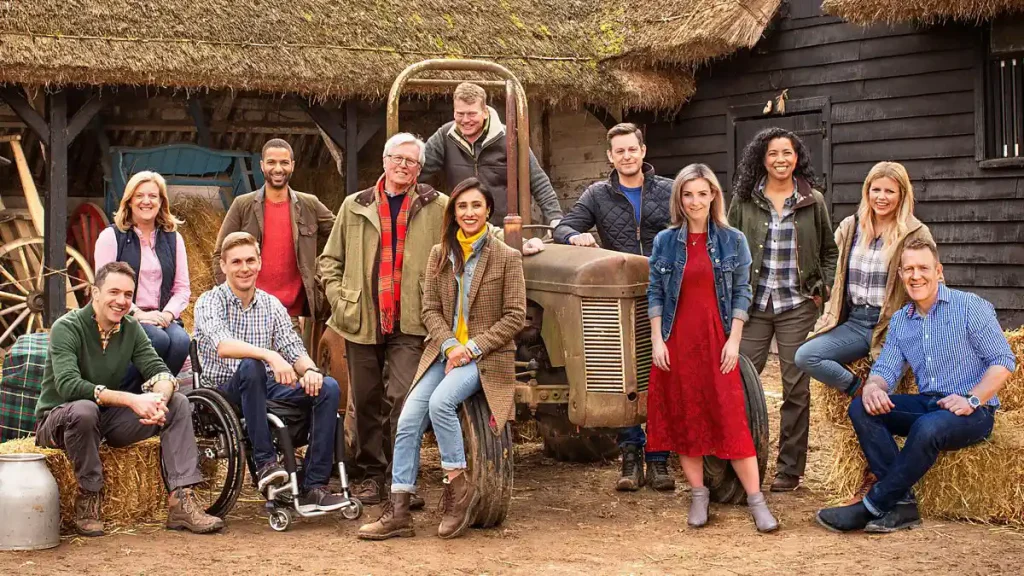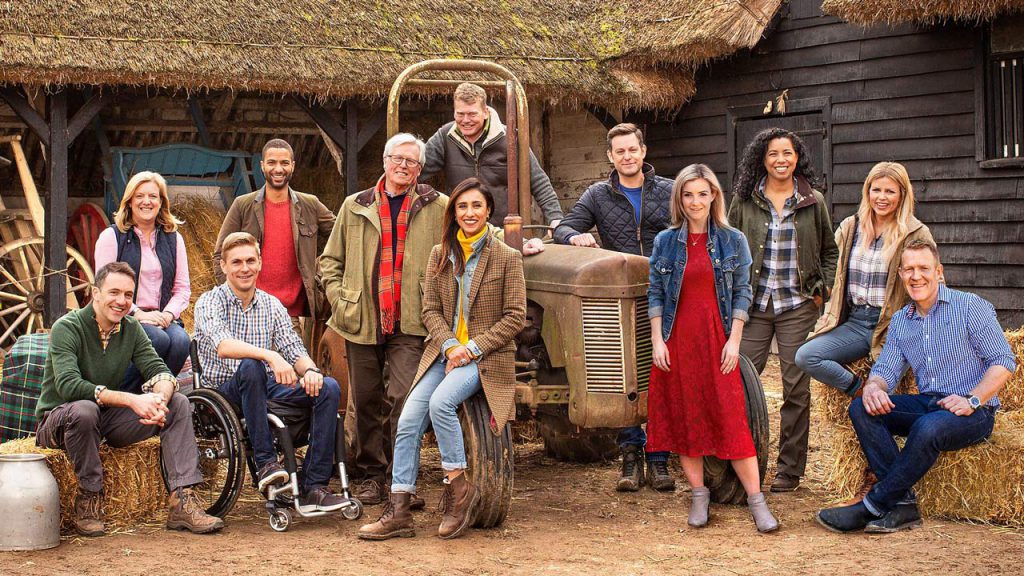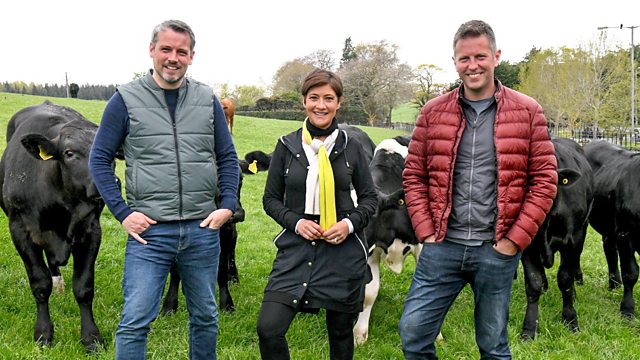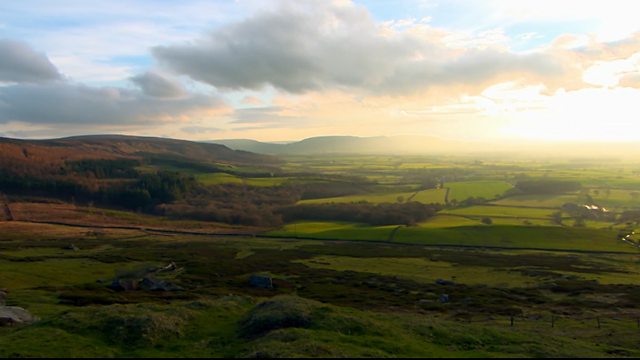Countryfile – Somerset Willow Harvest – In the heart of Somerset Levels, an area renowned for its sprawling wetlands stretching from the Mendip Hills to the Blackdown Hills, Joe Crowley delves into the rich tapestry of history, heritage, and traditional farming practices that make this region unique. His journey takes him to meet Rich Roberts, a local farmer deeply rooted in the art of cultivating Somerset willow during the winter months. Joe immerses himself in the hands-on experience, cutting and preparing this versatile crop, a vital component of the local economy, for its journey to the market.
Not far from Rich’s farm, Joe discovers the transformative journey of the harvested willow whip. He meets a family with generations invested in the willow trade, who passionately craft this raw material into an array of products, from luxurious hampers and traditional hot air balloon baskets to innovative eco-friendly coffins. This family not only preserves but also rejuvenates this ancient heritage craft by training enthusiastic apprentices, ensuring the survival and evolution of their age-old skills.
Meanwhile, in the picturesque Cotswolds, Adam Henson embarks on a personal mission to revive his historic orchard. With a keen eye on the future, Adam’s efforts are focused on nurturing the apple trees, anticipating a bountiful harvest in the coming autumn. This project symbolizes a blend of conservation and agricultural innovation, echoing the region’s deep connection with its past and its adaptive approach towards future farming challenges.
Charlotte Smith, on the other hand, turns her attention to a more pressing concern facing British agriculture – the resurgence of bluetongue. Typically found in warmer climates, this animal disease, spread by midges, is reappearing in Britain, potentially reshaping the landscape of British farming. As climate change alters environmental conditions, Charlotte investigates how farmers are adapting to these new challenges, possibly having to integrate disease management strategies that were once alien to the cooler British climate.
Countryfile – Somerset Willow Harvest: Captivating the Essence of Somerset Levels
Unveiling the Somerset Levels: A Natural Wonder
Nestled between the Mendip Hills and the Blackdown Hills lies the Somerset Levels, a breathtaking mosaic of wetlands that paint a picture of natural serenity and agricultural richness. This region, draped in a verdant cloak, beckons with its unique blend of wildlife and waterways, carving a landscape that whispers tales of yesteryear. As one traverses through these lush plains, they encounter a symphony of chirping birds and rustling reeds, each note harmonizing to create an ambiance that is quintessentially Somerset.
Beneath the surface of this pastoral paradise, lies a network of peat-rich soils, nurturing an array of flora and fauna. The Levels, as they are affectionately known, are not just a haven for biodiversity but also a testament to nature’s resilience and adaptability. Every curve of the river and each rustling blade of grass tells a story of survival and coexistence, inviting visitors to pause and appreciate the unspoiled beauty that thrives here.
Joe Crowley’s Quest in the Heart of Somerset
Into this tranquil world steps Joe Crowley, a figure driven by an innate curiosity and a passion for unearthing the stories that define our lands. Joe’s journey through the Somerset Levels is more than a mere exploration; it’s a pilgrimage to the heart of British heritage and tradition. With each step, Joe unravels the intricate tapestry of history and culture that the Levels have meticulously woven over centuries.
As he meanders through the wetlands, Joe encounters not just the scenic beauty of the region but also its soul – the people who shape and are shaped by this land. His interactions are not mere exchanges but deep, meaningful connections that shed light on the symbiotic relationship between man and nature. Through Joe’s eyes, we see the Somerset Levels not just as a geographical feature but as a living, breathing entity that cradles stories of past and present.
The Cultural and Historical Significance of Somerset Willow Harvest
In the crisp air of winter, when the landscape dons a misty veil, the Somerset Levels reveal yet another facet of their identity – the willow harvest. This traditional practice, deeply rooted in the cultural fabric of Somerset, is a dance of endurance and skill. The harvesting of willow, a craft passed down through generations, is not just an agricultural activity but a ritual that celebrates the bond between the land and its stewards.
Joe’s exploration of the willow harvest is a journey into the heart of Somerset’s heritage. He witnesses how the humble willow, thriving in the moist soils of the Levels, transforms into a symbol of craftsmanship and resilience. Each willow rod, cut and prepared for sale, carries within it the essence of Somerset – a blend of simplicity, elegance, and strength. As Joe delves deeper into this tradition, he uncovers stories of communities and families for whom willow is not just a crop, but a legacy that intertwines with their very identity.
The Art and Craft of Somerset Willow
Meeting Rich Roberts: The Master of Willow Cultivation
In the heart of Somerset’s sprawling wetlands, Rich Roberts stands as a testament to the enduring legacy of willow cultivation. His hands, weathered yet skilled, weave through the willow with an ease born of years of dedication. Rich’s story is one of passion intertwined with the land he calls home. As he walks through his fields, the willow bows in the gentle breeze, each stem a narrative of the symbiosis between man and nature.
Rich’s approach to willow cultivation is a blend of tradition and innovation. Adhering to time-honored methods, he nurtures the willow, ensuring each crop is more than just a plant – it’s a piece of Somerset’s soul. His work is a dance of patience and precision, shaping a crop that’s as versatile as it is vital for the local economy. Here, the willow is not just grown; it’s cherished, a symbol of the land’s fertility and resilience.
From Plant to Product: The Life Cycle of Somerset Willow
The journey of Somerset willow from plant to product is a story of transformation. Each willow whip, carefully harvested, embarks on a voyage from the fields to the hands of skilled artisans. This process is a marvel of craftsmanship, where the natural becomes the extraordinary. The willow, once cut, is meticulously prepared, undergoing a metamorphosis into various forms – from robust baskets to elegant hampers.
This transformation is a testament to the versatility of the willow and the ingenuity of those who work with it. As the artisans bend and weave the willow, they’re not just creating products; they’re weaving history and culture into every piece. Each item reflects the spirit of Somerset, a narrative of the land’s bounty and the artisans’ skill. In this chapter, the willow tells its own story, one of growth, change, and the timeless art of turning the simple into the sublime.
Preserving Heritage: Training the Next Generation of Willow Artisans
In Somerset, the willow craft is not just preserved; it’s thriving, thanks to the dedication of families deeply rooted in this ancient practice. These guardians of tradition are not only masters of their craft but also mentors, passing their knowledge to eager apprentices. This transfer of skills is vital, ensuring the willow craft continues to flourish in the modern world.
The apprentices, with eyes wide with wonder and hands eager to learn, represent the future of Somerset’s willow heritage. Under the guidance of seasoned artisans, they learn the nuances of this craft, from selecting the perfect willow whip to mastering the intricate patterns of weaving. This chapter is a celebration of continuity, a bridge between past and future, where age-old skills are given new life in the hands of the next generation of willow artisans.
Beyond the Willow Fields
Adam Henson’s Orchard Revival in the Cotswolds
In the quaint and picturesque Cotswolds, Adam Henson undertakes a heartfelt mission: the revival of an ancient orchard. This project is more than just agriculture; it’s a journey back in time, reconnecting with the roots of traditional British farming. Adam, with his deep understanding of the land and its history, breathes new life into the old apple trees, symbolizing a bridge between the past and the future of farming.
His orchard is a labor of love, each tree carefully tended to, with the hope of reaping a bountiful apple harvest. This endeavor isn’t just about producing fruit; it’s about preserving a piece of British heritage. As Adam nurtures these trees, he’s also nurturing a story – a narrative of resilience, renewal, and the enduring bond between man and nature.
The Impact of Climate Change on British Agriculture
The serene world of traditional farming is now facing a formidable challenge: climate change. Its impact on British agriculture is profound, reshaping the way farmers interact with their environment. This chapter delves into the complexities of this new reality, exploring how changing weather patterns are influencing agricultural practices across Britain.
Charlotte Smith, a keen observer and advocate for sustainable farming, investigates the implications of these changes. Her focus is not just on the problems but also on the solutions – how British farmers are innovating and adapting to an evolving climate. This narrative isn’t one of despair, but of adaptation and resilience, highlighting the ingenuity and perseverance of those who work the land.
Charlotte Smith’s Investigation into the Bluetongue Disease
Charlotte Smith’s investigation takes a deeper dive into a specific challenge exacerbated by climate change: the resurgence of bluetongue disease. This disease, a scourge for livestock, is finding its way into Britain, propelled by warmer temperatures. Charlotte’s exploration is both informative and empathetic, highlighting the concerns of farmers and the measures being taken to combat this threat.
Her investigation is a call to action, shedding light on the need for robust disease management strategies and the importance of scientific research in safeguarding the future of British farming. In this section, the story of bluetongue becomes a microcosm of the larger issue of climate change and its impact on agriculture, underscoring the need for vigilance, innovation, and cooperation in the face of global environmental challenges.
FAQs Countryfile – Somerset Willow Harvest
What Makes the Somerset Levels Unique in Terms of Natural Beauty and Farming?
The Somerset Levels stand out as a unique landscape in England due to their expansive wetlands and rich biodiversity. This area is a natural mosaic of floodplains and peat bogs, interlaced with rivers and reed beds, creating a haven for wildlife. In terms of farming, the Levels are renowned for their traditional practices like willow cultivation, which has been a part of the local culture for centuries. The combination of natural beauty and traditional farming practices makes the Somerset Levels a distinct and precious part of the British countryside.
How Does the Willow Harvesting Process Contribute to the Local Economy?
Willow harvesting in the Somerset Levels plays a crucial role in the local economy. This craft not only supports farmers like Rich Roberts but also fuels a variety of cottage industries. Artisans transform the harvested willow into valuable products like baskets, hampers, and eco-friendly coffins, showcasing the versatility of this natural resource. This industry not only preserves local heritage and crafts but also provides employment opportunities, thereby sustaining the local economy.
What are Some of the Unique Products Made from Somerset Willow?
Somerset willow is renowned for its flexibility and strength, making it ideal for crafting a wide range of products. Artisans in the area create luxurious hampers, traditional hot air balloon baskets, and even eco-friendly coffins. Each product is a testament to the skill and creativity of the local craftsmen, turning a natural resource into items of beauty and practicality. These products are not just commodities; they are pieces of cultural heritage, showcasing the rich tradition of willow crafting in Somerset.
How is the Tradition of Willow Craft Being Preserved for Future Generations?
The tradition of willow craft in Somerset is being preserved through a combination of family heritage and formal training programs. Artisan families, who have been in the trade for generations, are passing down their skills to the next generation. Additionally, apprenticeship programs are being offered to train young artisans in this ancient craft. These efforts ensure that the skills and knowledge of willow crafting are not lost, keeping this traditional practice alive and vibrant for future generations.
What Challenges Does the Resurgence of Bluetongue Disease Pose for British Farmers?
The resurgence of bluetongue disease poses significant challenges for British farmers. This viral disease, affecting livestock, can lead to severe economic losses due to reduced productivity and increased veterinary costs. As the disease spreads through midges, farmers need to adopt new strategies for controlling insect populations and monitoring animal health. The challenge is further compounded by the changing climate, requiring farmers to be more adaptable and vigilant in disease management.
Conclusion Countryfile – Somerset Willow Harvest
Reflecting on the Interconnection of Tradition and Innovation in Somerset
As we draw the curtains on our exploration of Somerset’s enchanting landscape, it’s clear that this journey has been about more than just discovering a place. It’s been about uncovering the deep interconnection between tradition and innovation that thrives within this region. The Somerset Levels, with their unique natural beauty and rich heritage in willow cultivation, stand as a beacon of how traditions can be nurtured and sustained in the modern world. The willow fields are not just areas of agricultural production; they are living museums, preserving ancient crafts while evolving to meet contemporary demands.
In these lush plains, every willow harvested, every basket woven, tells a story. A story of resilience, of adaptation, and of the unbreakable bond between humans and their environment. Somerset’s narrative is a powerful reminder of how our past can inform our future, providing lessons in sustainability, creativity, and community spirit.
The Future of Farming: Embracing Changes and Preserving Heritage
Looking forward, the lessons learned from Somerset are invaluable. As we grapple with global challenges like climate change and evolving diseases, the resilience and adaptability demonstrated by the farmers and artisans of Somerset offer inspiration. Their ability to harmonize traditional practices with innovative solutions is a blueprint for sustainable living and farming.
The future of farming, as seen through the lens of Somerset, is bright and hopeful. It’s a future where heritage is honored and innovation is welcomed. A future where the harmony between land and its stewards is not just maintained but celebrated. As we conclude this journey, we take with us the essence of Somerset – a testament to the enduring spirit of its people and the timeless beauty of its landscape.




